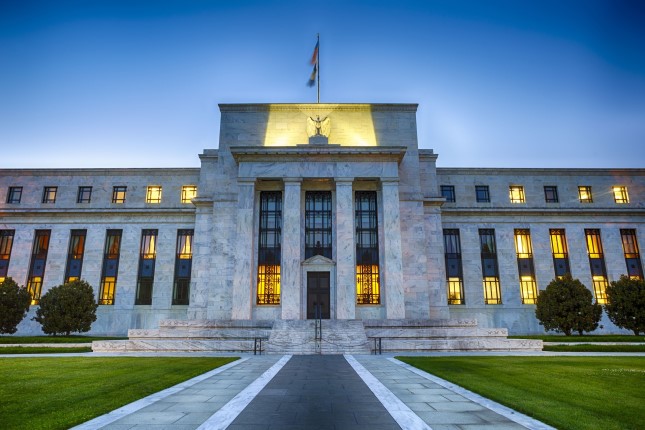At the beginning of December 2022 the Bank for International Settlements (BIS) stunned global financial markets in early December by sounding an alarm in its latest quarterly report about an out-of-control and non-transparent surge in off-balance sheet dollar debt racked up by "non-bank" financial institutions. According to the BIS, pension funds and other non-bank financial firms have more than USD 80 trillion of hidden, off-balance sheet dollar debt from FX swaps and forwards.
The BIS said that 2022's market upheaval had largely been navigated without major issues. However, there is been a discernable change in the tone of this "central bank to the world's central banks."
While in the past the BIS had urged the world's leading central banks to act resolutely in a bid to rein in rising inflation, this time around, it is focusing on a different set of issues, including the crypto market troubles and last fall's UK bond market turmoil. Moreover, it appears that it was the latter issue that, in fact, prompted the BIS to raise the issue of non-bank institutions' off-balance sheet debt, which typically doesn't fall within the purview of the "central bank to central banks."
The BIS was compelled to address financial markets' most sensitive topic, that of hedging risks with derivatives, because of British pension funds' apparent overreliance on resorting to liability-driven investment (LDI) and propensity for using the aggressive strategy of rate hikes in an attempt to beat inflation that has led to growing yields (and falling prices) in the UK government bond market.
To shore up their hedging schemes pension funds found themselves strapped for cash that they could get by dumping government bonds resulting, in turn, in further price reductions and their own growing demand for liquidity needed to fund their LDI hedging schemes.
It took an urgent intervention by the Bank of England in the form of a multi-billion-dollar emergency bond-buying operation to break the vicious cycle and restore order to the market.
By turning its attention to non-bank financial institutions' off-balance sheet debt, the BIS inadvertently exposed the greatest secret of today's global financial system: its staggering, hidden and growing dependence on refinancing by the US Federal Reserve System.
The Fed has gobbled everybody up
The two principal crises of the early 21st century (the 2008 financial meltdown and the 2020 COVID-19 pandemic) have shown that FX swap markets are extremely sensitive to shortfalls in funding. Whatever the differences between the 2008 and 2020 situations, they had one thing in common: in both cases, FX swaps developed into a source of quickly spreading instability. This prompted the US Federal Reserve to not only introduce swap lines for the West's leading central banks, but to also make arrangement for direct dollar-denominated refinancing of non-US banks' US-based subsidiaries, even in cases when it was not completely clear who would be the ultimate debtor under these swaps.
As a result, over the course of ten years, the "hidden" FX swap debt grew from USD 55 trillion to more than USD 80 trillion, which exceeds the stocks of dollar-denominated Treasury bills, repo and commercial paper combined while the churn of FX swap deals was close to USD 5 trillion a day, or two-thirds of daily global FX turnover.

Headquarters of the Federal Reserve System.
Non-banks outside the US now owe USD 26 trillion worth of FX obligations in the form of swaps and forwards, twice the size of their on-balance sheet dollar debt, while non-US banks with direct access to Federal Reserve credit owe close to USD 39 trillion.
The implication of that is that any independent refinancing mechanisms, primarily in Europe and especially in non-eurozone countries, have been all but obliterated. The situation in the eurozone is only slightly better. The US Federal Reserve has become the only real money issuing centre. That said, its de facto influence goes well beyond its ability to control and manage international finances.
The off-balance-sheet dollar debt of non-bank institutions outside the US is not just much greater than their on-balance sheet debt, but it is also growing at a faster rate. As of late June of 2022, the outstanding debt was nearly twice the size of the on-balance sheet element estimated to be at "just" USD 13 trillion. By comparison, hidden off-balance sheet dollar debt in 2016 was only 1.6 times greater than the on-balance sheet debt.
Accordingly, left unattended and unchecked by the Fed, this "hidden" offshore debt has turned into an increasingly grave challenge. It is also clear that should financial problems get worse as credit policies tighten, this could potentially give rise to more "black swan" events that might threaten to undermine the integrated global financial system. Or alternatively, this could necessitate further uncontrolled dollar issuances.
A Point of Risk
Under these circumstances, Europe is becoming a key source of risk. The EU's severing of its economic ties with Russia and a dramatic rise in energy prices have caused a precipitous increase in the size of the current account deficit. Between March and September, the euro zone's total accrued current account deficit grew up to EUR 98.5 billion.
Over a twelve-month period between August 2021 and September 2022, the aggregate current deficit amounted to EUR 50 billion compared with a surplus of EUR 336 billion year-on-year. All in all, the amount of loss for the year approached the figure of nearly EUR 400 billion, precipitated by the change from a foreign trade surplus of EUR 362 billion over a 12-month period to a EUR 41 billion deficit.
All these factors make Europe's economy extremely vulnerable and dependent on inflows of capital which is not anything that the EU is particularly accustomed to. In addition, this predicament seems to be getting all the more challenging given that many European manufacturing companies have chosen to relocate away from the continent in an attempt to escape its soaring energy prices, which could make Europe's dependence on capital inflows chronically persistent.
The European debt crisis of 2010 underscored Europe's financial system's fundamental vulnerability and, as far as banks are concerned, the crisis has not really been mitigated ever since. At the time, the debt crisis that ravaged the weaker countries on Europe's periphery was successfully overcome thanks to the excellent state of Germany's economy and finances. However, these days Germany seems to have, too, hit a rough patch.
In this context, recent record drops in the value of Deutsche Bank's and Credit Suisse's stocks look particularly alarming. And not just because of what is happening at these banks per se, but also as an indication of the current state of the European banking system. Going forward, it is going to be a daunting task to regain profitability and customer trust amid the economic crisis the EU is finding itself in. Nor is there any telling what other surprises might await us, similar to the ones that the BIS stunned us with recently.
Main photo: BIS Headquarters.
































